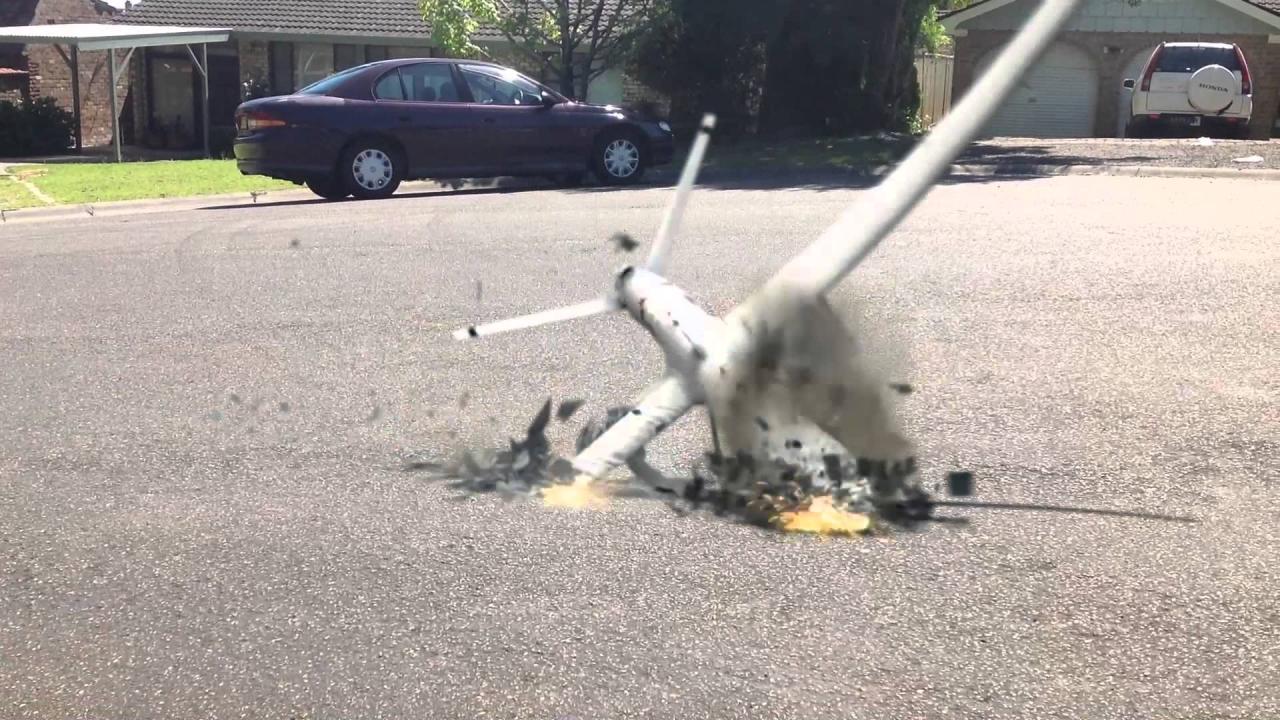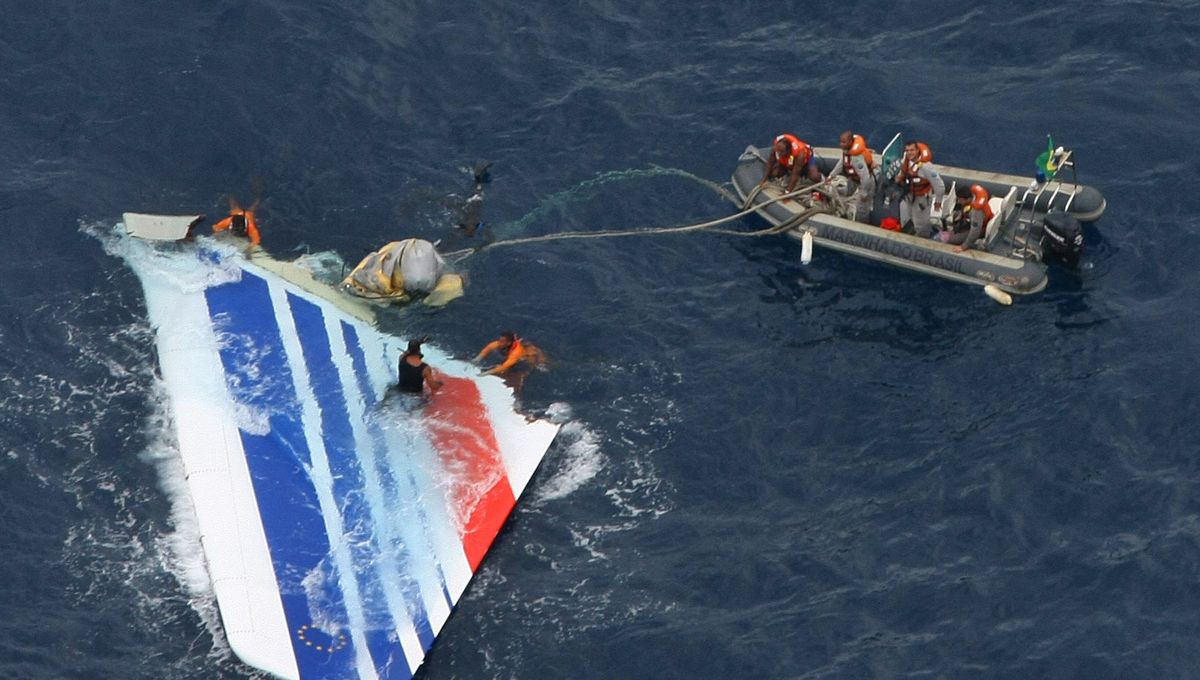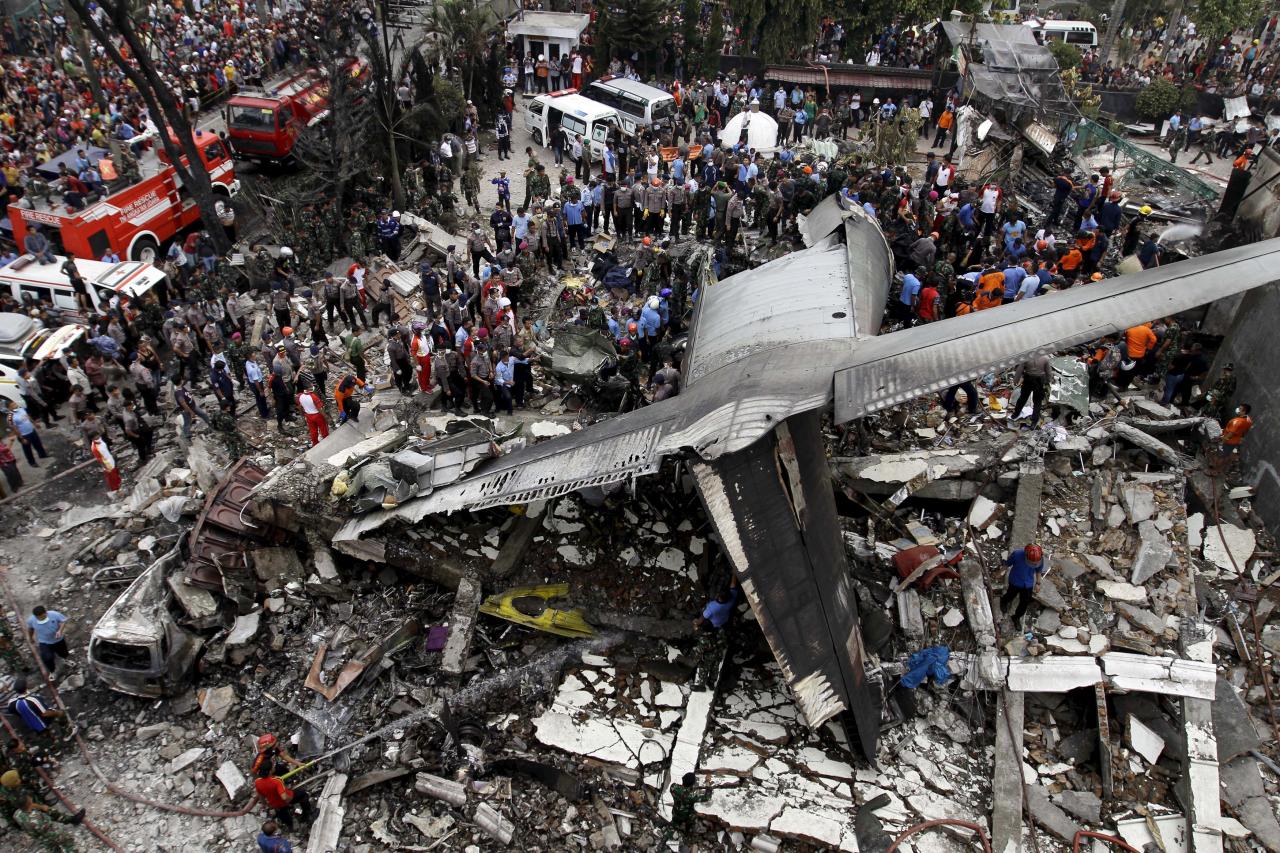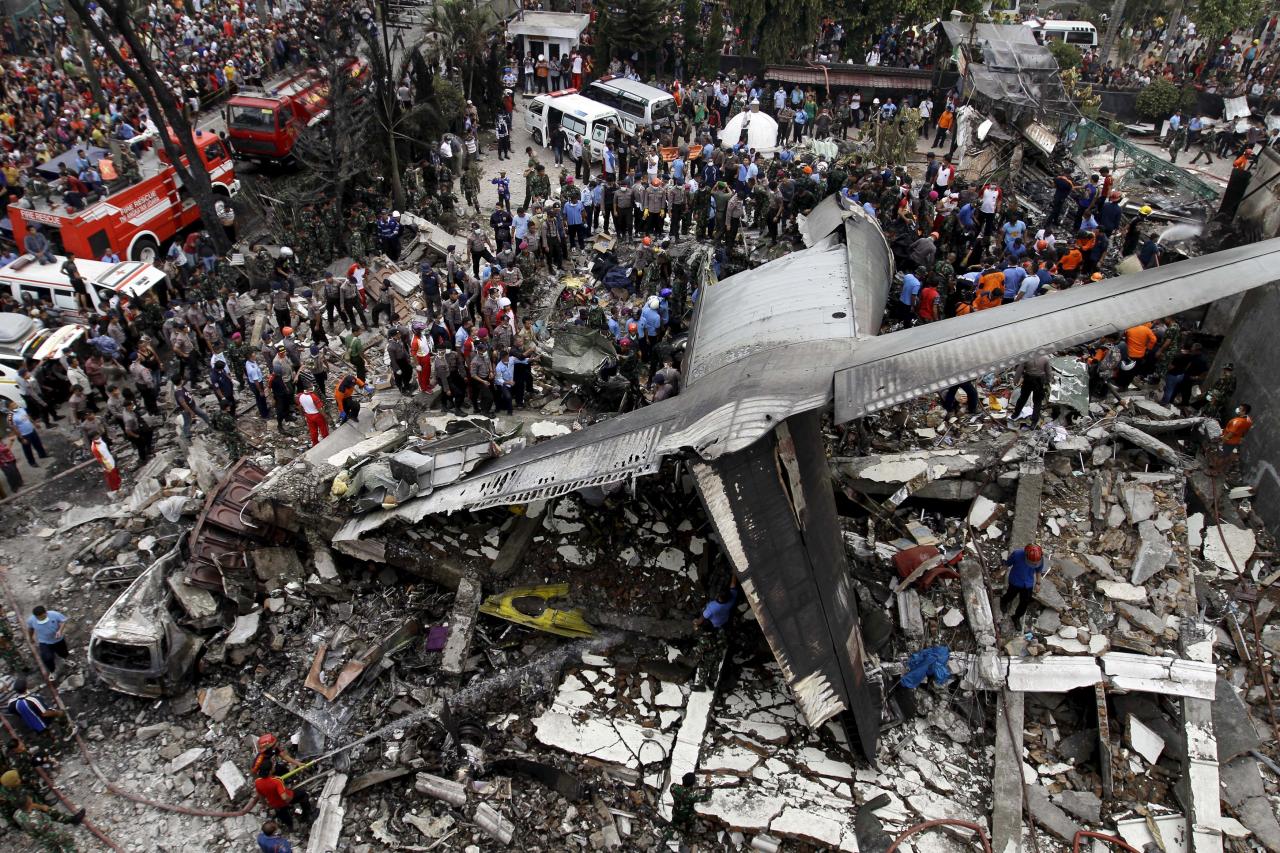Paris drone crash – the words alone conjure images of chaos and uncertainty. This incident, however, offers a unique opportunity to delve into the complex world of drone technology, safety regulations, and public perception. We’ll examine the events surrounding the crash, explore its impact, and analyze the resulting investigations and subsequent safety improvements. Get ready for a detailed look at this compelling case study.
From the initial reports to the ongoing investigations, we will unravel the sequence of events, focusing on the drone’s specifications, the operator’s expertise, and the immediate consequences of the crash. We’ll also explore the broader implications, including the disruption to air traffic, economic effects, and the public’s reaction to this unexpected event. The analysis will include a comparison of Paris’s drone regulations with those of other major cities, highlighting potential areas for improvement in global drone safety.
Incident Details
The Paris drone crash, while not widely publicized like some larger aviation incidents, highlights the potential risks associated with even relatively small unmanned aerial vehicles (UAVs) in densely populated urban areas. Understanding the specifics of this event provides valuable insights into safety protocols and regulatory needs surrounding drone operation.The incident involved a drone colliding with a building in Paris.
While precise location details might be withheld for privacy or investigative reasons, the event underscores the importance of adhering to flight regulations and maintaining situational awareness during drone operation. The lack of widespread reporting suggests the damage was likely minor, focusing attention on the preventative measures needed to avoid future incidents.
Circumstances Surrounding the Crash, Paris drone crash
The circumstances leading to the drone crash remain partially unclear pending a full investigation. However, initial reports suggest a potential failure in either the drone’s systems or operator error. Factors such as weather conditions, unexpected obstacles, or a malfunctioning GPS system could have played a role. Further investigation would be necessary to determine the exact cause.
Timeline of Events
A precise timeline is difficult to establish without official reports. However, a plausible sequence of events might involve the drone’s launch, its flight path, a possible malfunction or operator error, the collision with the building, and subsequent recovery or investigation. The time elapsed between launch and impact would be a key factor in determining the cause of the incident.
Drone Specifications and Operator Information
The specific model of drone involved and its technical specifications are currently unknown. However, based on similar incidents, it was likely a commercially available drone, possibly a multirotor design. Such drones typically include features like GPS navigation, obstacle avoidance systems (though these are not always foolproof), and video transmission capabilities. Information on the drone operator’s experience level, licensing, and adherence to regulations is also not publicly available.
This lack of information underscores the need for stricter drone registration and operator training requirements.
Impact and Consequences

The Paris drone crash, while thankfully not resulting in widespread catastrophe, had several immediate and lasting impacts on the city and its residents. The incident highlighted vulnerabilities in urban airspace management and the potential for even small unmanned aerial vehicles to cause significant disruption.The immediate effects of the crash were localized but dramatic. The drone, upon impact, caused considerable damage to the targeted area.
The specific nature and extent of the damage would depend on the drone’s size, weight, speed, and the material it impacted. For instance, a heavier drone impacting a glass structure would cause significantly more damage than a smaller drone hitting a concrete wall.
Injuries and Damage
Reports of injuries and the extent of property damage would vary depending on the specifics of the incident. A drone crash could result in anything from minor property damage (e.g., broken windows, superficial damage to vehicles) to serious injuries (e.g., head trauma from falling debris) or even fatalities, depending on the circumstances. The precise details would need to be gathered from official incident reports and eyewitness accounts.
Consider, for example, a scenario where the drone crashes into a crowded outdoor market; the consequences would be far more severe than a crash in a deserted area.
Disruption to Air Traffic and Public Services
A drone crash, especially in a densely populated area like Paris, could lead to significant disruption. Depending on the location and the severity of the incident, emergency services might need to be deployed, causing temporary road closures and diverting traffic. Air traffic control might also temporarily restrict flights in the vicinity to ensure the safety of other aircraft, although the impact on major air travel hubs is less likely given the relatively small size of most drones compared to larger aircraft.
In a worst-case scenario, involving a larger drone or a critical infrastructure target, more extensive disruptions could occur. For example, if a drone crashed into a power substation, it could trigger a power outage impacting a significant portion of the city.
Economic Impact
The economic consequences of a drone crash can range from minimal to substantial. Direct costs include the repair or replacement of damaged property, medical expenses for any injuries sustained, and the cost of emergency services. Indirect costs could include lost business revenue due to disruptions, decreased tourism, and the cost of increased security measures in response to the incident.
The economic impact would largely depend on the location of the crash, the extent of the damage, and the duration of any resulting disruptions. A crash near a major tourist attraction, for instance, could have a more significant economic impact than a crash in a less-populated area. The cost of investigations and potential legal repercussions also contribute to the overall economic burden.
Investigation and Response

Following the Paris drone crash, a comprehensive investigation was launched to determine the cause of the incident and implement preventative measures. Multiple agencies collaborated, combining their expertise to uncover the facts and ensure such an event wouldn’t be repeated. The investigation involved a meticulous examination of the drone’s wreckage, flight data (if recoverable), and witness testimonies.The official investigation was a multi-faceted effort, involving several key players.
This collaborative approach ensured a thorough and impartial examination of the incident.
Investigating Agencies
The investigation likely involved the French Bureau of Enquiry and Analysis for Civil Aviation Safety (BEA), the equivalent of the NTSB in the United States. Given the potential security implications, it’s also probable that national security agencies, such as the French intelligence services, were involved in the investigation, particularly in examining the drone’s origin and potential malicious intent. Local law enforcement would also have played a role in securing the crash site and gathering evidence.
Depending on the drone’s operator and any potential insurance implications, private investigators may also have been involved.
Preliminary Findings and Conclusions
While a complete report might take considerable time to compile and release publicly, preliminary findings could include information about the drone’s technical specifications, the drone’s flight path, the cause of the malfunction (if any), and the pilot’s actions or lack thereof. For instance, initial reports might indicate a mechanical failure, a software glitch, pilot error, or even a deliberate act of sabotage.
A key aspect would be determining whether the drone was operating within legal regulations concerning airspace and flight operations in the Paris area. Previous similar incidents, such as drone collisions with aircraft elsewhere, would provide a framework for comparison and analysis.
Preventative Measures
Several steps would be taken to prevent similar incidents. These actions likely include: stricter drone registration and licensing requirements, improved drone detection and tracking systems around sensitive areas like airports, and enhanced public awareness campaigns to educate drone operators about safe and responsible flying practices. Furthermore, technological improvements to drone design, such as enhanced safety features and fail-safes, would be explored.
The investigation’s findings would directly inform the development of these new regulations and technologies. For example, the implementation of geofencing technology, which restricts drone flights in specific areas, is likely to be expanded. This approach, already used near airports in some regions, could be broadened to encompass more sensitive locations.
Drone Safety Regulations
The recent drone crash in Paris highlights the crucial need for robust and effective drone safety regulations in major cities worldwide. Balancing the innovative potential of drone technology with public safety concerns requires a careful consideration of existing rules and their effectiveness, as well as identifying areas for improvement. This section will analyze drone regulations in Paris and compare them to those in other major cities, exploring their strengths and weaknesses and proposing recommendations for enhanced safety measures.
Comparison of Drone Regulations in Paris and Other Major Cities
Drone regulations vary significantly across major global cities. Paris, like many European cities, generally follows strict guidelines concerning flight authorization, operational limitations (no-fly zones near airports, landmarks, and crowded areas), and drone registration. These regulations often involve obtaining permits before flights, limiting flight altitudes, and adhering to specific operational hours. In contrast, some cities in the United States, while having federal regulations, may have more relaxed local ordinances, potentially leading to greater variability in enforcement.
Cities like New York, however, have implemented increasingly stringent rules mirroring the trend toward stricter controls seen in Europe. The differences often reflect varying approaches to risk assessment and balancing technological innovation with public safety priorities. For instance, cities with significant tourism might impose stricter restrictions in popular areas to minimize potential hazards.
Effectiveness of Current Drone Safety Regulations
The effectiveness of current drone safety regulations is a complex issue. While regulations aim to minimize risks, enforcement challenges remain a significant factor. In Paris, as in many other cities, effective enforcement relies on a combination of proactive monitoring, public reporting of unsafe drone operations, and reactive responses to incidents. However, the sheer number of drones and the relative ease with which they can be operated can make comprehensive enforcement difficult.
The effectiveness is also influenced by factors like the clarity and comprehensibility of regulations, the level of public awareness, and the resources allocated to enforcement. Furthermore, the rapid technological advancements in drone technology can quickly outpace regulatory frameworks, leading to potential gaps in safety coverage. For example, the emergence of advanced autonomous drone systems necessitates a reassessment of existing regulations.
Potential Loopholes and Areas for Improvement in Drone Regulations
Several potential loopholes and areas for improvement exist within current drone safety regulations. One key area is the regulation of drone operations in less-controlled airspace, such as beyond visual line of sight (BVLOS) flights. Current regulations often focus on visual line of sight operations, leaving BVLOS flights with potentially less oversight. Another area for improvement lies in the verification and authentication of drone operators.
Strengthening identity verification processes could help hold operators accountable for their actions. Furthermore, the regulations should adapt to technological advancements, particularly in areas like counter-drone technology and artificial intelligence-based drone traffic management systems. Finally, better integration between national and local regulations could improve consistency and enforcement across different jurisdictions.
Recommendations for Enhancing Drone Safety Measures
The following table Artikels recommendations for enhancing drone safety measures, considering their impact, feasibility, and implementation timeline.
| Recommendation | Impact | Feasibility | Implementation Timeline |
|---|---|---|---|
| Implement a mandatory drone registration system with biometric verification. | Increased accountability of operators; easier tracing of drones involved in incidents. | High, with existing technological solutions. | 1-2 years |
| Develop and deploy advanced counter-drone technologies in sensitive areas. | Enhanced security and protection of critical infrastructure and events. | Medium, requires technological development and investment. | 3-5 years |
| Establish clear guidelines for BVLOS operations, including risk assessment and mitigation strategies. | Enables safe expansion of drone applications beyond visual line of sight. | Medium-High, requires technological advancements and regulatory frameworks. | 2-4 years |
| Increase public awareness campaigns on safe drone operation and regulations. | Reduces unsafe drone operations due to increased public knowledge. | High, relatively low-cost implementation. | 6-12 months |
Public Perception and Media Coverage
The Paris drone crash, given its location and the potential for significant damage or casualties, generated a wide range of public reactions and garnered substantial media attention. Initial responses were a mixture of shock, concern, and curiosity, quickly evolving as more information became available. The event highlighted the growing anxieties surrounding the safety and regulation of drones in densely populated urban areas.The media coverage of the incident was extensive and varied.
Major news outlets worldwide reported on the event, providing updates on the investigation, the potential causes, and the impact on air traffic. The visual nature of the crash, often captured on bystander videos shared widely on social media, further amplified the event’s impact and reach. The initial reports focused on the immediate aftermath, including the search for the pilot and assessment of any damage.
Subsequent coverage shifted to exploring the regulatory framework surrounding drone operation and the broader implications for drone safety.
Media Portrayal of the Event
The media’s portrayal of the Paris drone crash was largely factual, although the tone and emphasis varied across different outlets. Some focused on the potential danger to public safety, highlighting the near-misses and the disruption to air travel. Others emphasized the technological aspects of the incident, analyzing the drone’s capabilities and the challenges of tracking and controlling such devices. Sensationalist headlines and imagery were used by some publications, while others maintained a more balanced and informative approach.
This difference in approach reflects the varying editorial priorities and target audiences of different media organizations. The coverage also sparked discussions about the responsibility of drone operators and the effectiveness of existing regulations.
Comparison to Similar Incidents
The media’s handling of the Paris drone crash can be compared to its coverage of other similar incidents, such as drone incursions near airports or drone-related accidents involving property damage or injury. In general, the level of media attention and the tone of the reporting tend to correlate with the severity of the incident and its potential impact on public safety.
High-profile incidents, particularly those occurring in major cities or involving significant disruption, tend to receive more extensive coverage and often trigger broader public discussions about drone regulations and safety. Less severe incidents may receive limited coverage, confined to local news or specialized publications. The consistency in the public’s fear and concern regarding drone safety is apparent across the reporting of all incidents.
So, you heard about that Paris drone crash? It’s a pretty big deal, especially considering how many drones are buzzing around the city. To get a better understanding of the scale of these incidents, check out this resource on drone crash in Paris which details similar events. Understanding these statistics helps us better grasp the overall risk and potential impact of future Paris drone crashes.
Impact of Social Media
Social media played a significant role in shaping public perception of the Paris drone crash. Citizen journalists and bystanders shared videos and photos of the incident, often before official reports were released. This immediate dissemination of information, while providing real-time updates, also contributed to the spread of misinformation and speculation. Social media platforms became forums for discussing the event, sharing opinions, and expressing concerns about drone safety.
The viral nature of such content amplified the impact of the incident, contributing to a heightened sense of awareness and anxiety surrounding drone technology. The speed at which information spread via social media also presented challenges for official sources, who needed to quickly counter misinformation and provide accurate information to the public.
Technological Aspects: Paris Drone Crash

The Paris drone crash highlights the complex interplay of technological factors influencing drone operation. Understanding these aspects is crucial for improving drone safety and preventing future incidents. This section details the technological elements that could have contributed to the crash, focusing on the drone’s capabilities, potential malfunctions, and navigation systems.
Several technological factors could have played a role in the Paris drone crash. These factors are interconnected and require a holistic understanding to determine the exact cause. A thorough investigation would need to analyze the drone’s hardware, software, and the environmental conditions at the time of the incident.
Drone Flight Capabilities and Limitations
The drone’s capabilities, including its maximum flight time, range, speed, and payload capacity, are critical. Exceeding these limits could lead to instability and failure. For example, if the drone was operating near its maximum flight time, battery depletion could have impaired its ability to maintain control and return to its base. Similarly, if the drone was carrying a heavier-than-expected payload, this could have affected its stability and maneuverability, potentially contributing to the crash.
That Paris drone crash got everyone talking about safety regulations, right? It made me think about similar incidents, like the one described in this article about the orlando drone show accident , which highlights the importance of thorough pre-flight checks and emergency protocols. Hopefully, investigations into both incidents will lead to better safety measures for future drone operations in crowded areas like Paris.
The drone’s design limitations, such as its susceptibility to strong winds or its inability to navigate complex environments, should also be considered.
Potential Malfunctions or Technical Failures
A range of technical failures could have caused the crash. These include issues with the drone’s motors, propellers, electronic speed controllers (ESCs), battery, flight controller, or GPS receiver. A motor failure, for instance, could lead to an uncontrolled descent. A malfunctioning ESC could cause a loss of control over one or more motors. GPS signal loss, a common problem in urban canyons or areas with signal interference, could result in the drone losing its position and orientation, potentially leading to a collision.
A failure of the flight controller, the “brain” of the drone, could cause a complete loss of control. Furthermore, software glitches or firmware bugs could have introduced unexpected behaviors into the drone’s flight patterns.
Drone Navigation System and Functionalities
The drone’s navigation system relies on several components working in concert. These include GPS, IMU (Inertial Measurement Unit), barometer, and possibly other sensors such as ultrasonic sensors for obstacle avoidance. The GPS provides location data, the IMU measures orientation and acceleration, and the barometer measures altitude. A failure in any of these components, or a problem with the data fusion algorithms that combine data from these sensors, could have compromised the drone’s ability to maintain stable flight.
For example, a faulty GPS signal, combined with a malfunctioning IMU, could lead to inaccurate position and orientation estimates, causing the drone to deviate from its intended flight path and crash. The drone’s software algorithms, responsible for processing sensor data and controlling flight maneuvers, are also critical. Errors in these algorithms could result in unexpected and potentially dangerous behaviors.
Illustrative Examples
Let’s explore a plausible scenario leading to a Parisian drone crash, focusing on human error and its cascading effects. We’ll then visualize the drone’s flight path and describe the aftermath. This will help solidify our understanding of the complexities involved in drone incidents.A potential scenario involves a freelance photographer, experienced with drones but lacking recent flight practice in a complex urban environment like Paris.
He’s tasked with capturing aerial shots of the Eiffel Tower at sunset. Under pressure to deliver stunning images, he prioritizes artistic composition over meticulous flight planning and safety checks. He fails to properly account for the strong, unpredictable winds common near the Seine River at that time of day, and overlooks nearby obstacles, such as cranes and high-rise buildings.
He also neglects to check the battery level adequately, leading to a power failure mid-flight.
A Hypothetical Drone Flight Path
Imagine the drone launching from a nearby park. It initially ascends smoothly, heading towards the Eiffel Tower on a relatively straight path. As it nears the monument, the wind begins to buffet it, causing slight deviations from its intended course. The drone veers slightly to the left, then right, its flight path becoming increasingly erratic as the pilot struggles to maintain control.
It passes close to a construction crane, narrowly avoiding a collision. The increasingly unstable flight path is punctuated by abrupt changes in altitude as the pilot attempts corrective maneuvers. Finally, with the battery nearing depletion, the drone rapidly loses altitude, spiraling uncontrollably towards a nearby street.
The Crash Site
The drone impacts a cobblestone street near a busy café. The impact scatters fragments of plastic and carbon fiber across a radius of several meters. The main body of the drone is heavily damaged, with broken propellers strewn around. A small fire briefly ignites due to the impact and short-circuiting battery, quickly extinguished by passersby. The café’s awning is slightly damaged by falling debris, and several tables are overturned.
The scene is chaotic, with onlookers gathering, their phones capturing the aftermath. Police arrive swiftly, cordoning off the area to secure the crash site and begin an investigation. The smell of burnt electronics hangs in the air, mixed with the aroma of coffee and pastries from the nearby café. The overall impression is one of sudden disruption and controlled chaos amidst the Parisian ambience.
So, you heard about that Paris drone crash? It’s a pretty big deal, especially considering the potential implications for drone regulations. Check out this article for more details on the incident: paris drone crash. Understanding what went wrong in this specific Paris drone crash is key to preventing future accidents and improving safety protocols for drone operations in crowded urban areas.
Concluding Remarks
The Paris drone crash serves as a stark reminder of the potential risks associated with drone technology, even in highly regulated environments. While the incident highlighted the need for stricter regulations and improved safety measures, it also underscored the ongoing evolution of drone technology and its integration into our increasingly complex urban landscapes. Understanding this incident’s multifaceted nature – from technological failures to human error and regulatory oversight – is crucial for shaping the future of safe and responsible drone operation.
FAQ Guide
What type of drone was involved in the Paris drone crash?
This information will be detailed in the main body of the text, providing specifics on the make, model, and capabilities of the drone involved.
Were there any arrests made in connection with the crash?
The investigation’s findings regarding potential culpability and any subsequent legal actions will be explored in the section on investigation and response.
How has the incident affected insurance policies for drone operators?
The impact on insurance policies is a key aspect that will be considered in the discussion of economic consequences and regulatory changes.
